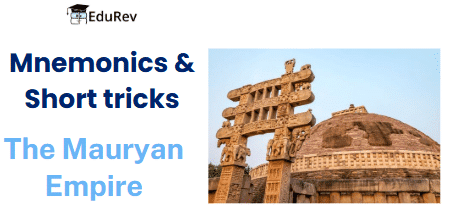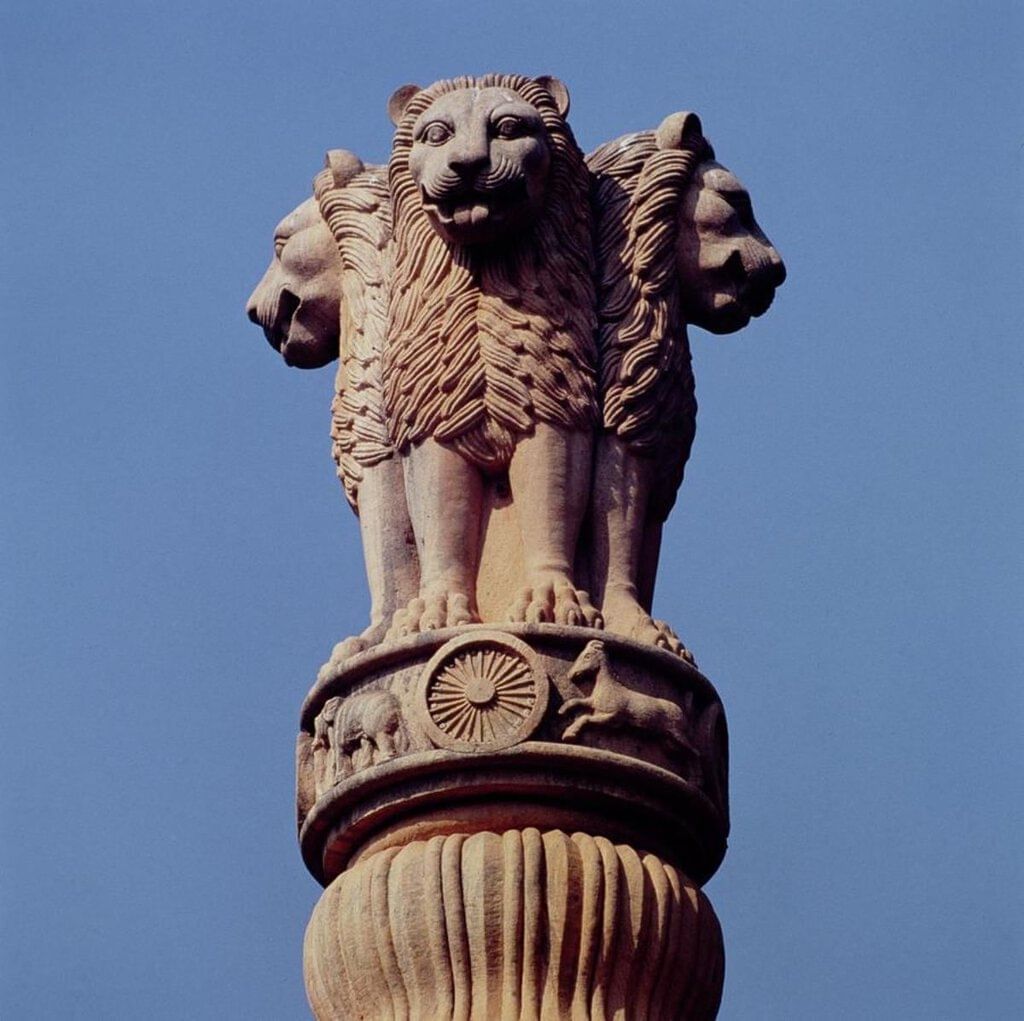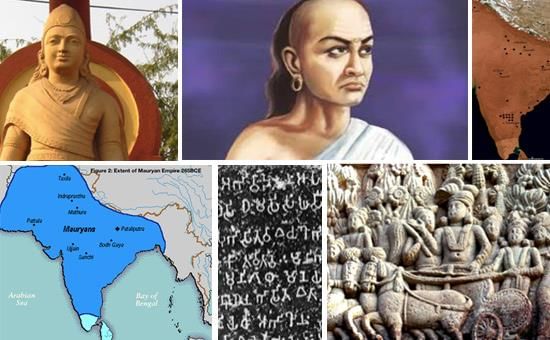UPSC Exam > UPSC Notes > History for UPSC CSE > Mnemonics: The Mauryan Empire
Mnemonics: The Mauryan Empire | History for UPSC CSE PDF Download
This document will help you remember important information about the Mauryan Empire in a fun and easy way. Inside, you'll find mnemonics—memory tricks—that will make it easier for you to recall key events, rulers, administration, and achievements of the Mauryan period.
These mnemonics will serve as valuable memory aids. Use them alongside your regular study routine to strengthen your knowledge and improve recall.
1. Rulers of Mauryan Empire
Mnemonic: Chandni Chowk se Biryani Aayi, Delhi Station Se Dhokla, Samosa Bhaaji
Mnemonic Explanation:
- Chandni Chowk se: Chandragupta Maurya (322–297 BCE)
- Biryani: Bindusara (297–272/268 BCE)
- Aayi: Ashoka (272/268–232 BCE)
- Delhi: Dasharatha (232–224 BCE)
- Station: Samprati (224–215 BCE)
- Se: Shalishuka (215–202 BCE)
- Dhokla,: Devavarman (202–195 BCE)
- Samosa: Shatadhanvan (195–187 BCE)
- Bhaaji: Brihadratha (187–180 BCE)
2. Literary Sources of Mauryan Empire
Mnemonic: Always Move Instantly
Mnemonic Explanation:
- Always: Arthashastra
- Move: Mudrarakshasa
- Instantly: Indica
3. Mauryan Administration
Mnemonic: Some People Dance Very Actively
- Some: Samrat (King)
- People: Provincial governors (Kumara/Aryaputra)
- Dance: District officials (Rajukas, Pradeshikas)
- Very: Village administration (Gramikas)
- Actively: Amatsyas (Council of Ministers/officials)
The document Mnemonics: The Mauryan Empire | History for UPSC CSE is a part of the UPSC Course History for UPSC CSE.
All you need of UPSC at this link: UPSC
|
210 videos|855 docs|219 tests
|
FAQs on Mnemonics: The Mauryan Empire - History for UPSC CSE
| 1. Who were the main rulers of the Mauryan Empire? |  |
Ans. The main rulers of the Mauryan Empire included Chandragupta Maurya, who founded the empire in 322 BCE, his son Bindusara, and the most famous ruler, Ashoka the Great, who ruled from 268 to 232 BCE. Ashoka is particularly known for his role in promoting Buddhism and his efforts to spread peace and non-violence.
| 2. What sources of literature provide information about the Mauryan Empire? |  |
Ans. Literary sources that provide information about the Mauryan Empire include ancient texts such as the Arthashastra, attributed to Kautilya (Chanakya), and the Edicts of Ashoka, which are inscriptions on pillars and rocks. Additionally, accounts by foreign travelers like Megasthenes, who visited during Chandragupta's reign, offer valuable insights into the empire's administration and culture.
| 3. How did Ashoka contribute to the spread of Buddhism during his reign? |  |
Ans. Ashoka contributed to the spread of Buddhism by promoting its teachings and principles throughout his empire and beyond. He built stupas and monasteries, sent missionaries to various regions, and inscribed the core Buddhist values of compassion and non-violence on his edicts, which helped establish Buddhism as a major world religion.
| 4. What was the significance of the Arthashastra in the context of the Mauryan Empire? |  |
Ans. The Arthashastra is significant as it serves as a crucial treatise on statecraft, economics, and military strategy during the Mauryan Empire. Written by Kautilya, it outlines practical approaches to governance and administration, providing a framework that influenced the political and economic policies of the Mauryan rulers.
| 5. How did the Mauryan Empire influence trade and economy in ancient India? |  |
Ans. The Mauryan Empire significantly influenced trade and economy by establishing a vast network of trade routes, both overland and maritime. The empire facilitated commerce by implementing standardized weights and measures, promoting agricultural production, and ensuring security along trade routes, which helped to integrate diverse regions of India into a cohesive economic system.
Related Searches





















